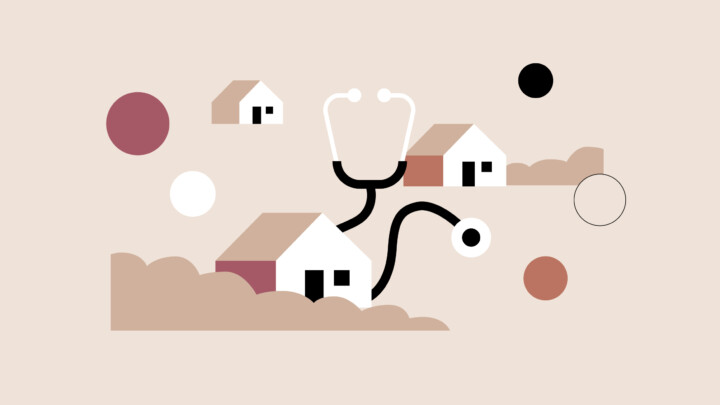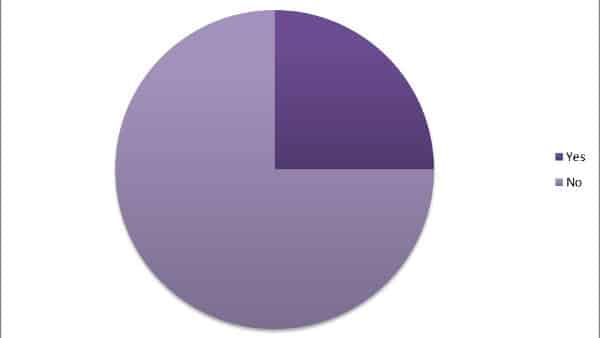
Unlike specialists who focus on particular organ systems or medical conditions, generalist physicians take a holistic approach to patient care. These medical professionals, including family medicine physicians, general practitioners and internal medicine physicians, go beyond treating isolated symptoms or specific diseases.
Generalist physicians are important as ever with healthcare systems worldwide facing pressures from aging populations and rising chronic disease rates. They manage everything from routine preventive services to complex chronic diseases, often serving as the first point of contact for patients seeking medical attention. Their training emphasizes breadth of knowledge rather than depth in a single specialty, enabling them to address the full spectrum of human health concerns across all age groups and demographics.
Family medicine vs. general practice
The terms “family medicine” and “general practice” are often used interchangeably, but distinctions exist between the two.
These terms can take different meanings in different countries, but in the U.S., family medicine represents a medical specialty formally recognized by medical boards, requiring completion of a specific residency training program focused on comprehensive care for individuals across all ages. Family medicine physicians receive training in pediatrics, OBGYN, internal medicine, psychiatry and neurology, surgery and community medicine, preparing them to serve as primary care doctors for entire family units.
General practice, in contrast, typically refers to physicians who provide primary care services without completing formal family medicine residency training. Before the American Board of Family Medicine (ABFM) introduced family medicine certification standards in 1969, most generalist physicians were referred to as general practitioners, and entered the workforce with one to two years of hospital-based training. Today, family medicine physicians outnumber general practitioners, though they still provide primary care in many communities. General practitioners may hold board certifications in other specialties or may be board-eligible in family medicine.
The scope of practice for both family medicine physicians and general practitioners typically includes preventive healthcare services, chronic disease management, acute illness treatment and coordination of care with specialists. Both serve as primary care doctors.
The role and importance of a generalist physician
Generalist physicians fulfill numerous critical functions within healthcare.
Primary diagnostician
As primary diagnosticians, generalist physicians serve as the initial evaluators for the vast majority of medical complaints. They possess the clinical skills and broad medical knowledge necessary to assess symptoms, order appropriate diagnostic tests and diagnose across multiple medical specialties. Generalist physicians excel at recognizing subtle patterns, considering differential diagnoses and distinguishing between serious conditions requiring immediate intervention and benign issues that can be managed conservatively.
Coordinator of care
Treatment sometimes involves multiple providers. Generalist physicians serve as central coordinators, ensuring that various aspects of a patient’s care work together harmoniously. This is particularly important for patients with multiple chronic conditions who see several specialists. The generalist physician maintains the “big picture” view of the patient’s health status.
Advocate for preventive care
Preventive healthcare services form a cornerstone of generalist medicine. These physicians champion vaccination programs, cancer screening initiatives, cardiovascular risk assessment and lifestyle modifications that prevent disease before it occurs. Their longitudinal relationships with patients position them ideally to identify risk factors early and implement preventive interventions.
Patient & family communicator
Effective communication represents a fundamental skill for generalist physicians, who must explain complex medical concepts to patients and families with varying levels of health literacy. They facilitate difficult conversations about prognosis and end-of-life care.
Hospitalist
Many generalist physicians work as hospitalists, providing inpatient medical care for hospitalized patients. Generalist physicians’ broad training makes them well-suited to handle the diverse medical issues that arise in hospital settings. Hospitalist roles have expanded significantly as healthcare systems recognize the value of having dedicated inpatient physicians who understand both acute care management and the coordination required for hospital stays.
Discharge planner
The transition from hospital to home or other care settings requires careful planning, which generalist physicians excel at. Effective discharge planning involves coordinating with home health services, rehabilitation facilities and outpatient providers to create seamless transitions. Generalist physicians’ broad perspectives help them anticipate potential complications.
Educator & mentor
Generalist physicians frequently serve as educators and mentors for medical students, residents and other healthcare professionals. 18% of surveyed physicians on Sermo said they chose to become a generalist based on influence from mentors, training or early career experience.
Consultant to specialists
While generalist physicians often refer patients to specialists, they also serve as consultants to specialty colleagues. They call on their broad knowledge base to help specialists make treatment recommendations that align with patients’ circumstances.
Leader in hospital committees
Generalist physicians frequently lead or participate in hospital committees focused on quality improvement, patient safety and clinical protocols. This allows them to influence healthcare policies, advocating for patient-centered approaches and evidence-based practices.
Emergency care provider
In many healthcare settings generalist physicians provide emergency medical care. Their broad training enables them to handle diverse medical emergencies, from cardiac events to traumatic injuries.
What generalists value most in their careers
Generalist physicians often experience career satisfaction, due to several key factors that distinguish their practice from more specialized medical fields:
Managing a broad scope of practice
Generalist physicians appreciate the intellectual stimulation that comes from managing a wide variety of medical conditions. When asked their main motivation for becoming a generalist physician, 55% of polled Sermo members in the U.S. said they desired broad medical knowledge and variety.
According to insights from practicing physicians, many love the variety that the generalist path offers. “I love the breadth and flexibility of family medicine, I am involved in so many initiatives and clinical care at the same time!” writes one family medicine physician on Sermo.
Treating diverse patient cases
In the same vein, generalists appreciate that the diversity of patient cases they encounter provide continuous learning opportunities. Aside from treating various medical conditions, they often also work with patients from various socioeconomic backgrounds, cultural groups and life circumstances.
Building strong patient relationships
Long-term patient relationships represent one of the most rewarding aspects of generalist medicine. These physicians often care for multiple generations within families. “The concept of taking care of people in the context of their family and generational care was the attracting factor for me,” writes a family medicine physician on Sermo. “It helps me [be] able to render care to an entire family having the knowledge to not only handle the conditions but also coordinate care.”
The trust developed over years of care allows for effective communication and possibly better treatment adherence. 48% of polled Sermo members cited strong patient relationships and continuity of care as their main motivator for becoming a generalist physician.
Having flexible career paths
Generalist training provides numerous career options and flexibility that appeals to many physicians. Generalists can work in private practice, hospital systems, urgent care centers, academic institutions, public health organizations or international health programs, in full-time or part-time capacities. Lifestyle flexibility and geographic freedom was the main draw to becoming a generalist among 45% of polled Sermo physicians.
Enjoying high demand and job security
The ongoing need for primary care services ensures strong job security for generalist physicians. Healthcare systems worldwide face shortages of primary care providers, creating abundant employment opportunities.
Working in various geographic locations
Generalist training enables physicians to practice effectively in diverse geographic settings. Many generalists value the flexibility to serve different communities or experience various practice environments throughout their careers.
Challenges faced by generalist physicians
Despite the many rewards of generalist practice, these physicians encounter significant challenges.
Staffing shortages
Staffing shortages particularly affect generalist practices, where the demand for primary care services consistently exceeds the available supply of qualified providers. For example, general internal medicine is facing a lack of interest from aspiring physicians, who are deterred by the thought of debt and low quality of life. This shortage forces existing generalists to manage larger patient panels, often resulting in shortened appointment times and difficulty providing comprehensive care.
Balancing workload
Generalist physicians often deal with high patient volumes. Time management becomes particularly challenging when the physicians encounter complex cases. The need to address both acute and ongoing chronic issues within limited appointment times creates constant pressure to maximize efficiency. Generalists may end up spending a great deal of their time on administrative tasks rather than direct patient care.
Some physicians decide to branch out, whether in response to challenges or desire to expand their knowledge. “Although I really enjoy my current specialty, family medicine, in the future I plan to do a second specialty, pediatrics,” writes one general practitioner on Sermo.
The impact of generalist physicians on healthcare
Generalist physicians profoundly influence healthcare systems. Their broad education and training enables them to address the complete spectrum of patient medical problems.
Cost-effectiveness represents a major contribution of generalist physicians to healthcare systems. Their ability to manage multiple conditions simultaneously, coordinate care with specialists, and emphasize preventive services helps control healthcare costs. Studies demonstrate that healthcare systems generalist physicians may be more efficient at utilizing resources. Their training emphasizes efficient use of diagnostic tests, appropriate medication selection and careful consideration of treatment benefits versus costs.
Their referral expertise can also contribute to efficiency. In a poll on Sermo, majority of respondents said the most undervalued role of a generalist physician is coordinating complex care across specialties.
Population health management represents another area where generalist physicians shine. Their involvement in preventive healthcare services and chronic disease management helps improve overall community health outcomes while reducing the burden of preventable diseases. 60% of Sermo members voted for preventive care and early diagnosis as generalist physicians’ most undervalued contribution.
Future trends and opportunities for generalist physicians
The evolving healthcare landscape presents opportunities for generalist physicians to expand their roles.
Telemedicine
The rapid expansion of telemedicine capabilities offers generalist physicians new tools. Telemedicine allows more flexible scheduling. The technology supports various aspects of generalist practice, from routine follow-up visits to urgent care consultations.
Remote patient monitoring technologies integrate well with generalist practice models, allowing physicians to track chronic disease indicators, medication adherence and lifestyle factors that influence health outcomes. This continuous monitoring capability enables more proactive intervention and better chronic disease management.
Integrated care models
New healthcare delivery models emphasize integration and coordination, areas where generalist physicians are particularly adept. These models recognize the value of comprehensive primary care and position generalist physicians as leaders.
Accountable care organizations and value-based payment models create incentives for the type of comprehensive, coordinated care that generalist physicians provide. These payment systems reward outcomes and efficiency rather than volume, playing to generalists’ strengths.
Team-based care models expands generalist physicians’ capabilities by incorporating nurse practitioners, physician assistants, pharmacists and other healthcare professionals into coordinated care teams. The generalists can then focus on complex decision-making while team members handle routine care tasks.
Population health management initiatives rely heavily on the expertise of generalist physicians, due to their broad expertise. The approach involves identifying population subgroups with similar needs to provide tailored interventions.
The integration of behavioral health services into primary care settings represents another opportunity for generalist physicians to expand their impact. Mental health and substance abuse issues frequently present in primary care settings, and integrated models allow for more comprehensive treatment approaches.
Embracing the future of comprehensive care
Generalist physicians remain indispensable to modern healthcare systems. Their ability to manage diverse medical conditions, build lasting patient relationships, and coordinate with specialists makes them essential.
Generalist physicians face challenges like resource constraints and workload pressures, but also exciting opportunities. They can expand their impact through emerging technologies like telemedicine and innovative care delivery models that emphasize integration and coordination. These developments align well with their comprehensive approach.
Ready to advance your career as a generalist physician? Join the Sermo community to connect with over 1.5 million healthcare professionals worldwide. Explore job opportunities, share insights with peers and access the resources you need to thrive in your generalist practice.















